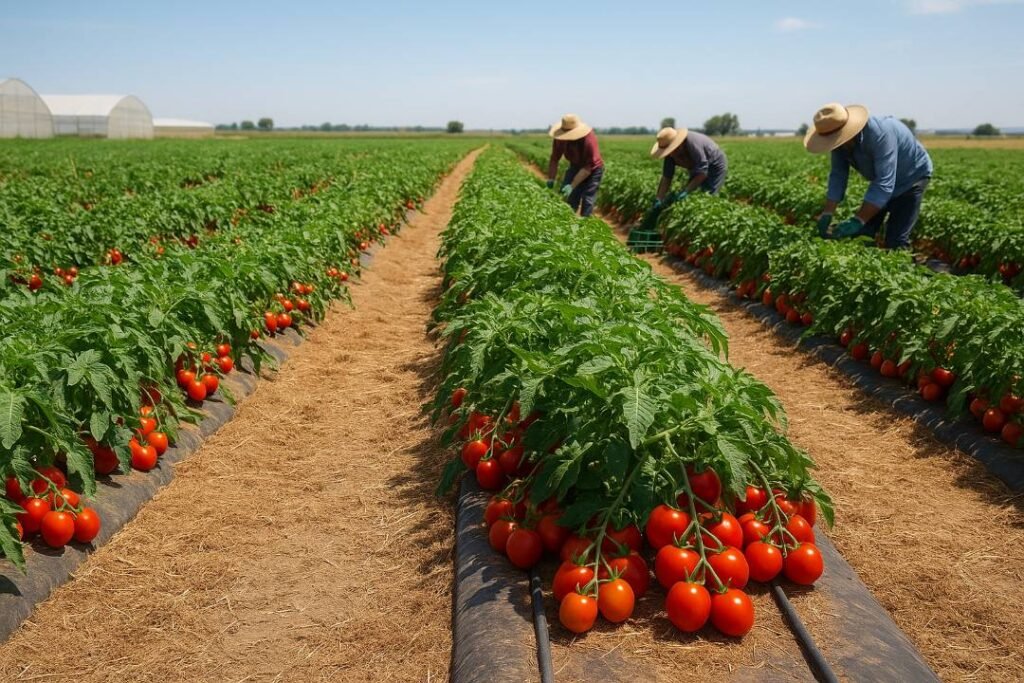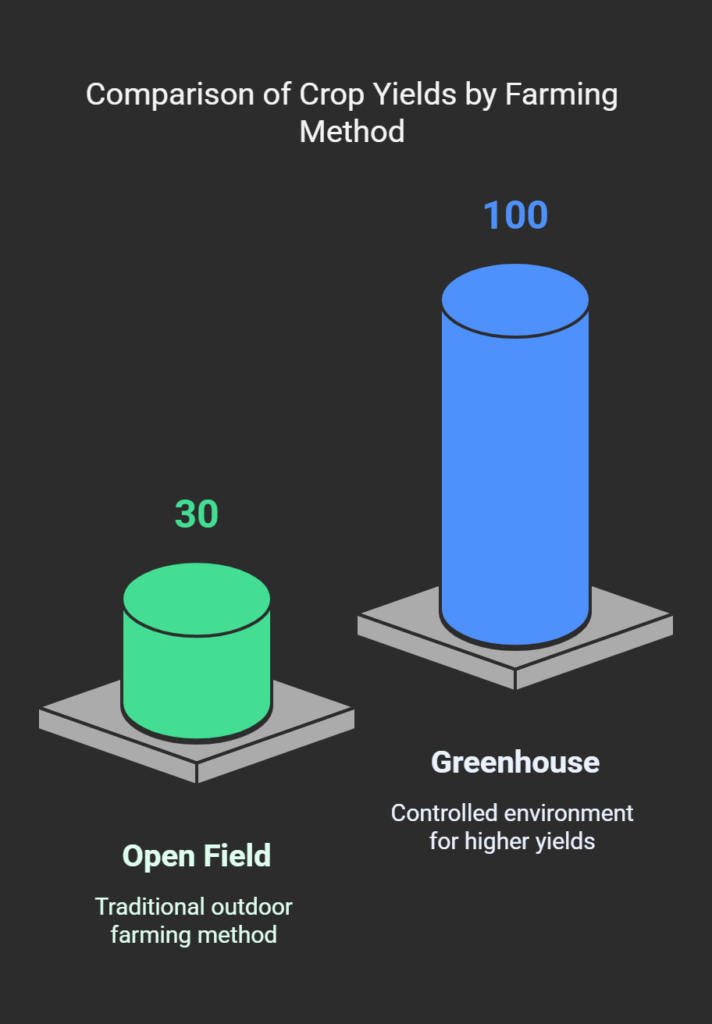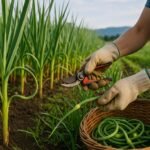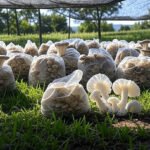
Introduction
Tomatoes are among the most commercially valuable vegetable crops in the world, with global production exceeding 189 million metric tons in 2022, according to FAO statistics. Smallholder farmers across Western regions like the USA, UK, Australia, and Europe are increasingly turning to tomato farming due to its high market demand, fast-growing cycle, and multiple harvest potential. Whether you’re selling to local markets or food processors, mastering tomato cultivation can yield consistent profits. Furthermore, tomato farming allows for diversification and helps stabilize farm income.
In this guide, we’ll explore key insights tailored for smallholder tomato producers—from selecting varieties and planting schedules to managing pests, diseases, and post-harvest handling. As you read on, you’ll notice that strategic timing, variety selection, and efficient practices play pivotal roles.
When to Plant Tomatoes in Western Regions
Planting tomatoes at the right time can significantly impact yield and crop health. Since tomatoes are warm-season crops, timing varies based on location and climate. Thus, understanding regional climates is essential.
- USA & Canada: Sow seeds indoors 6–8 weeks before the last frost (typically February–March). Transplant outdoors between late April and June depending on the zone.
- UK & Northern Europe: Sow indoors in March-April; transplant outdoors after mid-May.
- Southern Europe & Mediterranean: Outdoor sowing can start from February; optimal planting is March–April.
- Australia: Planting occurs in late winter to early spring (August–October), depending on the region.
Using a greenhouse or polytunnel allows for earlier planting and extended harvesting, especially in cooler climates. Moreover, it enables year-round production in some regions.

Choosing the Right Tomato Variety for Commercial Farming
Selecting a suitable tomato variety is essential for maximizing profitability. Because different markets demand different fruit types, you should align your choice with both customer expectations and farm conditions.
Below is a comparison table to help you match varieties with farming needs:
| Variety | Best For | Resistance | Yield Potential | Notes |
|---|---|---|---|---|
| Roma VF | Paste/Processing | Fusarium, Verticillium | Medium | Meaty texture, ideal for canning |
| Heinz 3402 | Processing | Disease-tolerant | High | Used by industrial processors |
| Big Beef | Fresh Market | Multiple resistances | High | Large, transport-friendly fruits |
| Celebrity F1 | Dual Purpose | Fusarium, Verticillium, Nematodes | Medium-High | Consistent in varied climates |
| Mountain Magic | Fresh Market | Late blight, cracking | Medium | Specialty and organic markets |
| Trust F1 | Greenhouse | Disease-tolerant | High | Suitable for vertical trellising |
| Geronimo | Greenhouse | Fusarium, leaf mold | Very High | Long fruiting cycle |
Choosing the right cultivar depends on your end goal: volume, durability, or quality. Additionally, hybrid seeds may offer better disease resistance and yield potential.
Land Preparation and Soil Requirements
Well-prepared soil enhances root development and reduces nutrient stress, resulting in healthy, productive tomato plants. Therefore, soil testing and amendments should not be overlooked.
Tomatoes thrive in well-drained loamy soil with a pH between 6.0 and 6.8. Conduct soil testing before planting to assess nutrient needs.
- Soil Preparation Tips:
- Incorporate 20–30 tons/ha of well-rotted compost or farmyard manure.
- Use raised beds to improve drainage.
- Apply lime or sulfur based on pH results.
According to Cornell University Extension, optimal soil organic matter boosts tomato yield by 15–20%. Furthermore, improving soil health reduces disease pressure.
Tomato Planting Techniques for High Yield
Adopting the right transplanting methods and spacing can enhance sunlight penetration, air circulation, and overall plant health. Consequently, it leads to better yields.
- Spacing:
- Open field: 45–60 cm between plants and 75–100 cm between rows.
- Greenhouse: Tighter spacing with vertical trellising (40 x 60 cm).
- Transplanting Tips:
- Harden seedlings by gradually exposing them to outdoor conditions for 5–7 days.
- Transplant when seedlings are 15–20 cm tall.
- Watering & Irrigation:
- Use drip irrigation to deliver consistent moisture and reduce disease.
- Mulch with straw or plastic film to conserve water.
As a result, these techniques support early fruiting and reduce losses.
Pruning and Trellising for Commercial Tomato Production
Proper pruning and trellising improve fruit quality and reduce disease pressure, especially in high-density commercial setups. For that reason, they are essential for greenhouse and vertical systems.
- Indeterminate Varieties:
- Remove suckers (side shoots) weekly.
- Use single-stem pruning for greenhouse crops.
- Trellising Options:
- Stakes (outdoor farms), string trellis (greenhouses), or mesh cages.
A study from the University of Florida showed staked tomatoes produce up to 40% more marketable yield. Consequently, structured support systems enhance productivity.
Best Fertilizer Schedule for Tomatoes (Organic & Inorganic)
Balanced nutrient management ensures vigorous plant growth and quality fruit development. Moreover, it reduces the likelihood of blossom end rot and nutrient deficiencies.
- Base Fertilizer (before planting):
- 10:10:10 NPK or compost + bone meal.
- Growth Stage Fertilizer:
- Vegetative: Higher nitrogen (e.g., 20:10:10).
- Flowering/Fruiting: Higher phosphorus and potassium (e.g., 5:15:20).
- Application Method:
- Fertigation through drip lines ensures uniform nutrient supply.
- Foliar sprays for micronutrients like calcium and magnesium.
Organic options include compost tea, fish emulsion, and seaweed extract. As a result, both conventional and organic growers can meet plant needs.
Major Tomato Pests in Western Farming Regions
Managing pests early prevents damage and avoids costly yield losses. In fact, an integrated approach is often the most sustainable.
Common pests include:
- Aphids – Cause leaf curling, transmit viruses.
- Whiteflies – Excrete honeydew, attract sooty mold.
- Spider Mites – Create webbing and yellow spots.
- Cutworms – Sever young plants at soil level.
IPM Strategies:
- Yellow sticky traps.
- Neem oil or insecticidal soap.
- Companion planting with basil or marigold.
Learn more: Integrated Pest Management for Tomatoes – UCANR
Common Tomato Diseases and How to Prevent Them
Diseases like blight and wilt can destroy an entire tomato crop if not managed correctly. Therefore, prevention is more effective than treatment.
- Late Blight (Phytophthora infestans): Water-soaked lesions on leaves; thrives in wet, cool conditions.
- Fusarium Wilt: Soil-borne fungus; causes yellowing and plant death.
- Powdery Mildew: White coating on leaves; common in dry climates.
Prevention Tips:
- Use certified disease-free seeds.
- Rotate crops every 2–3 years.
- Ensure adequate plant spacing for airflow.
- Apply copper-based fungicides or Bacillus subtilis sprays.
Additionally, regular field scouting can help detect symptoms early.
Harvesting Tomatoes for Commercial Markets
Knowing the right harvest time ensures quality and reduces post-harvest loss. As tomatoes ripen, careful handling becomes increasingly important.
- Stages:
- Mature Green (for shipping), Breaker (starting to color), Red Ripe (ready to eat)
- Harvesting Method:
- Hand-harvest during early morning to reduce fruit heat.
- Use gloves and clean crates to minimize bruising.
- Post-Harvest Handling:
- Grade based on size, shape, and ripeness.
- Store at 12–15°C with 85–90% humidity.
This ensures tomatoes reach consumers in top condition.
Tomato Storage and Transportation Tips
Effective storage and transportation preserve tomato freshness and market value. For smallholders, maintaining quality during transit is crucial.
- Short-Term Storage: Keep tomatoes at 55°F (13°C) to avoid chilling injury.
- Packaging: Use ventilated plastic crates or cardboard boxes.
- Transport: Avoid over-stacking; use padded liners for long distances.
Maintaining the cold chain during transportation can increase shelf life by 5–7 days. In turn, this helps farmers secure repeat buyers.
Profitability Tips for Smallholder Tomato Farmers
By minimizing waste and improving production efficiency, smallholders can achieve solid profits from tomato cultivation. Strategic decisions make a significant difference.
- Optimize Inputs: Use local compost, schedule fertilizer only when necessary.
- Yield Estimates:
- Open field: 25–35 tons/ha
- Greenhouse: Up to 100 tons/ha
- Value Addition:
- Sun-drying, sauce/paste production.
- Partner with local processors or grocery chains.
- Market Access:
- Join cooperatives to reduce input costs and improve bargaining power.
- Sell to local farmers markets or CSA (Community Supported Agriculture) networks.
Additionally, digital marketplaces and direct-to-consumer apps open new selling opportunities.

Conclusion
Tomato farming offers excellent income potential for smallholder farmers in the Western world when managed strategically. By choosing the right variety, following a tested fertilization and pest management plan, and maintaining strong post-harvest practices, you can maximize yield and market value. Stay informed, experiment on a small scale before scaling up, and leverage data-driven farming for better decisions.



